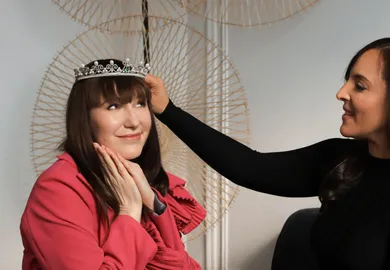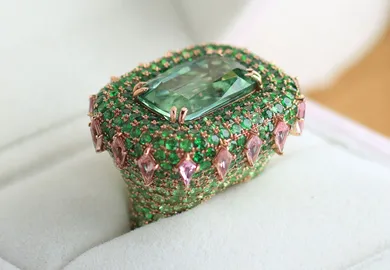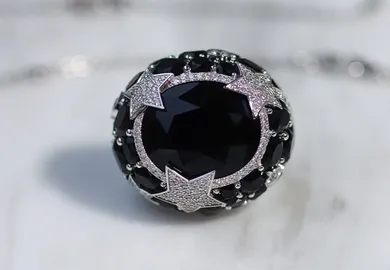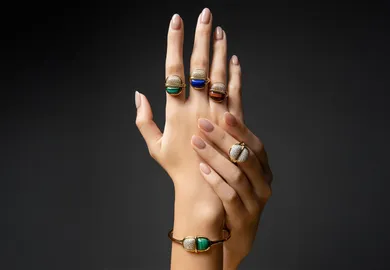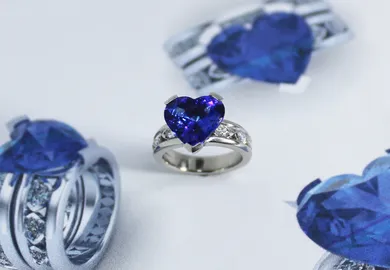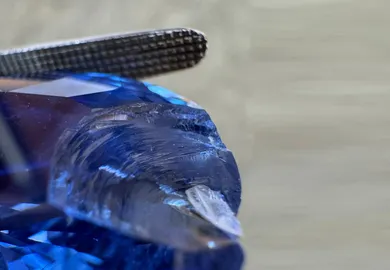
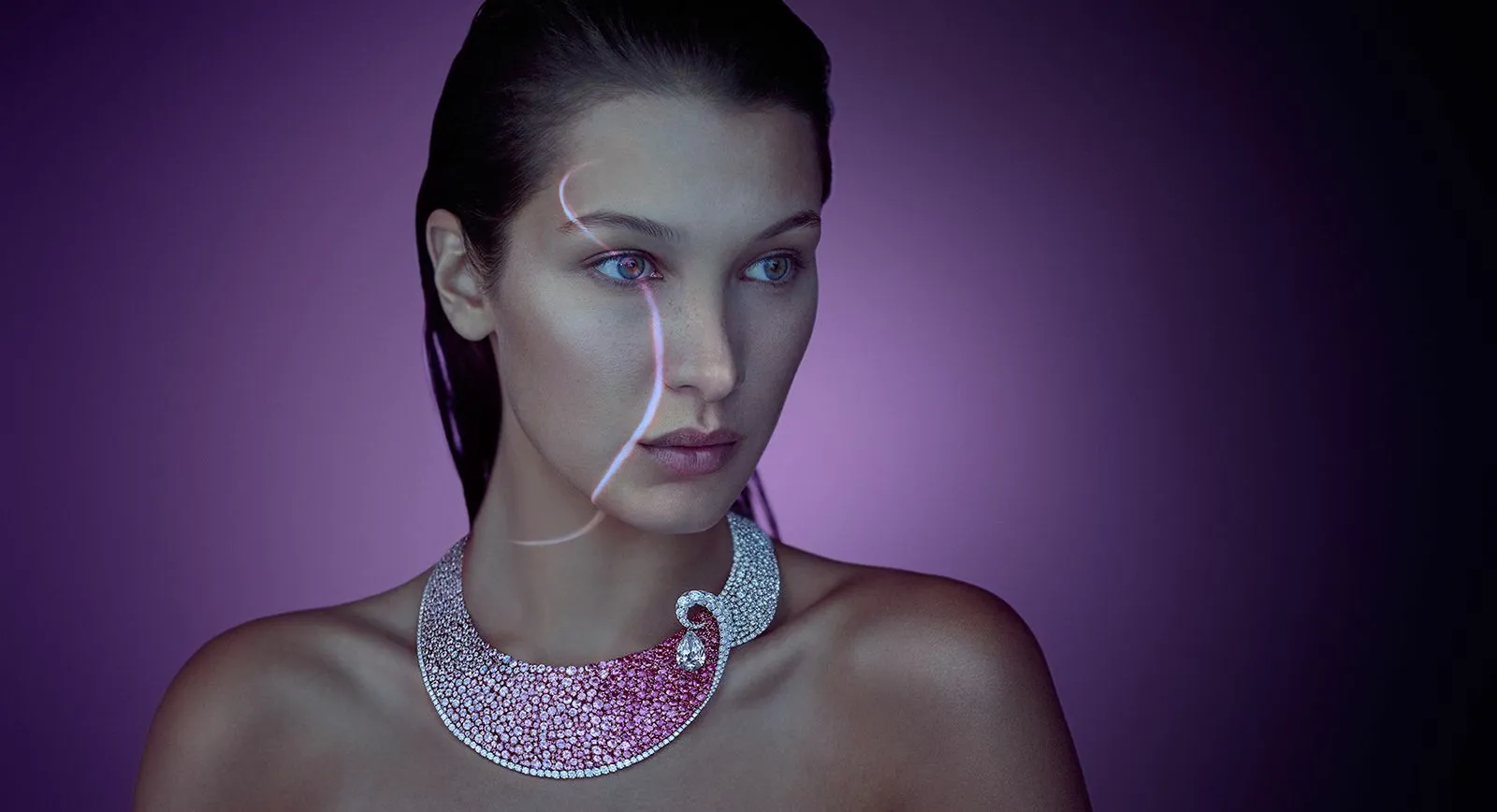
Boghossian: Artistic, Audacious, Alluring Jewels
The name of the Swiss fine jewellery house Boghossian is synonymous with audacious and artistic designs. It was established in 2007 by Albert Boghossian, a man with a unique creative vision who seeks inspiration in diverse cultures and timeless art.
Albert and three other members of the Boghossian family established Boghossian (former BOGH-ART) as a brand with the aim of becoming more than “just another jeweller”. They divided their collections into “three angles of Boghossian” which include the finest and rarest gemstones, ‘Art of Inlay’ jewellery, and visually intriguing pieces fashioned with new materials.

Boghossian
The founder’s nephew, Roberto Boghossian, is based in London where a Boghossian boutique opened in November 2013. He talks to me about the heritage of Boghossian and its intricate jewellery techniques that set the maison apart from every other designer.
The origins of my family history date back to the early twentieth century, starting with the life of Ohannes Boghossian who escaped the Syrian dessert and settled as a goldsmith in Aleppo, Syria’s largest city. By the late 50s, he was the owner of his own workshop and soon expanded this family enterprise with two more jewellery shops in the thriving economy of Beirut. – Roberto Boghossian

Boghossian diamond necklace
Ohannes became one of the biggest traders in large diamonds and pieces of jewellery sourced from Middle Eastern and Asian kingdoms. His son Robert and grandson Jean carried on his legacy. “In 1970, Jean decided to take the business in a new direction and after numerous travels throughout India, Thailand and Colombia he became a pioneer in introducing coloured stones to the Middle Eastern markets,” continues Roberto. “He became one of the largest purveyors of stones to the most famous jewellers of Tehran and the Gulf.”
In 1975, the family company opened their first European office in Antwerp, the world’s diamond centre and two years later Albert, Jean’s younger brother, joined him. “He [Albert] brought a new dimension to the family business through the creation of high-end jewellery specially designed for the prestigious European jewellery houses and private collectors,” says Roberto, as if to emphasise the time when Boghossian’s DNA was formed.

Boghossian conch pearl and diamond necklace
It was not until 2007 that the launch of Boghossian (BOGH-ART then) as a brand took place after Roberto and his brother Ralph came on board. They “felt that it was the right time to stop working behind the scenes crafting pieces for other jewellers and private collectors. Throughout the years we had formed our own style based on “three angles of Boghossian” as we call it. We were ready to share our creations with a wider audience, those who were seeking exquisite, refined, yet unconventional jewellery”.
This is exactly how Boghossian jewellery can be defined. Rooted in tradition but looking to the future with new materials and new techniques that will do justice to the beauty of the gems they use, Boghossian creates wearable works of art. “The inspiration behind the designs is a merger of East and West, where arabesque styles and oriental motifs are blended with European aesthetics for a contemporary feel,” says Roberto describing the jewellery. “We are breathing life into traditions lost, making the ‘Art of Inlay’ the house’s signature style.”

From left to right: Roberto, Albert, Jean and Ralph Boghossian
So what is the ‘Art of Inlay’? It is a way of working with precious or decorative materials by inserting contrasting elements into each other to create a visually intriguing design. This technique originated in Ancient Egypt under the Pharaohs and was mostly used in architecture with the finest example being the Taj Mahal. This architectural masterpiece is widely recognised as “the jewel” of Muslim art in India and it has inspired numerous Boghossian pieces.
Taking the same concept used for the embellishment of Mughal’s Taj Mahal, we introduced materials that are more precious and more delicate to manipulate. After we have selected the gems and decided on the colours to use, each stone is meticulously carved and shaped, then set directly into the next one to create an alluring contrast and colour. – Roberto Boghossian
Despite its ancient roots, the ‘Art of Inlay’ requires a precision comparable to the finest watch-making. In order to show off the beauty of their gems, jewellers minimise the amount of metal they use, truly allowing them to reveal the gems’ tonality and brilliance and to create the illusion of a single body.

WORDS
Katerina Perez is a jewellery insider, journalist and brand consultant with more than 15 years’ experience in the jewellery sector. Paris-based, Katerina has worked as a freelance journalist and content editor since 2011, writing articles for international publications. To share her jewellery knowledge and expertise, Katerina founded this website and launched her @katerina_perez Instagram in 2013.

Boghossian: Artistic, Audacious, Alluring Jewels
The name of the Swiss fine jewellery house Boghossian is synonymous with audacious and artistic designs. It was established in 2007 by Albert Boghossian, a man with a unique creative vision who seeks inspiration in diverse cultures and timeless art.
Albert and three other members of the Boghossian family established Boghossian (former BOGH-ART) as a brand with the aim of becoming more than “just another jeweller”. They divided their collections into “three angles of Boghossian” which include the finest and rarest gemstones, ‘Art of Inlay’ jewellery, and visually intriguing pieces fashioned with new materials.

Boghossian
The founder’s nephew, Roberto Boghossian, is based in London where a Boghossian boutique opened in November 2013. He talks to me about the heritage of Boghossian and its intricate jewellery techniques that set the maison apart from every other designer.
The origins of my family history date back to the early twentieth century, starting with the life of Ohannes Boghossian who escaped the Syrian dessert and settled as a goldsmith in Aleppo, Syria’s largest city. By the late 50s, he was the owner of his own workshop and soon expanded this family enterprise with two more jewellery shops in the thriving economy of Beirut. – Roberto Boghossian

Boghossian diamond necklace
Ohannes became one of the biggest traders in large diamonds and pieces of jewellery sourced from Middle Eastern and Asian kingdoms. His son Robert and grandson Jean carried on his legacy. “In 1970, Jean decided to take the business in a new direction and after numerous travels throughout India, Thailand and Colombia he became a pioneer in introducing coloured stones to the Middle Eastern markets,” continues Roberto. “He became one of the largest purveyors of stones to the most famous jewellers of Tehran and the Gulf.”
In 1975, the family company opened their first European office in Antwerp, the world’s diamond centre and two years later Albert, Jean’s younger brother, joined him. “He [Albert] brought a new dimension to the family business through the creation of high-end jewellery specially designed for the prestigious European jewellery houses and private collectors,” says Roberto, as if to emphasise the time when Boghossian’s DNA was formed.

Boghossian conch pearl and diamond necklace
It was not until 2007 that the launch of Boghossian (BOGH-ART then) as a brand took place after Roberto and his brother Ralph came on board. They “felt that it was the right time to stop working behind the scenes crafting pieces for other jewellers and private collectors. Throughout the years we had formed our own style based on “three angles of Boghossian” as we call it. We were ready to share our creations with a wider audience, those who were seeking exquisite, refined, yet unconventional jewellery”.
This is exactly how Boghossian jewellery can be defined. Rooted in tradition but looking to the future with new materials and new techniques that will do justice to the beauty of the gems they use, Boghossian creates wearable works of art. “The inspiration behind the designs is a merger of East and West, where arabesque styles and oriental motifs are blended with European aesthetics for a contemporary feel,” says Roberto describing the jewellery. “We are breathing life into traditions lost, making the ‘Art of Inlay’ the house’s signature style.”

From left to right: Roberto, Albert, Jean and Ralph Boghossian
So what is the ‘Art of Inlay’? It is a way of working with precious or decorative materials by inserting contrasting elements into each other to create a visually intriguing design. This technique originated in Ancient Egypt under the Pharaohs and was mostly used in architecture with the finest example being the Taj Mahal. This architectural masterpiece is widely recognised as “the jewel” of Muslim art in India and it has inspired numerous Boghossian pieces.
Taking the same concept used for the embellishment of Mughal’s Taj Mahal, we introduced materials that are more precious and more delicate to manipulate. After we have selected the gems and decided on the colours to use, each stone is meticulously carved and shaped, then set directly into the next one to create an alluring contrast and colour. – Roberto Boghossian
Despite its ancient roots, the ‘Art of Inlay’ requires a precision comparable to the finest watch-making. In order to show off the beauty of their gems, jewellers minimise the amount of metal they use, truly allowing them to reveal the gems’ tonality and brilliance and to create the illusion of a single body.

WORDS
Katerina Perez is a jewellery insider, journalist and brand consultant with more than 15 years’ experience in the jewellery sector. Paris-based, Katerina has worked as a freelance journalist and content editor since 2011, writing articles for international publications. To share her jewellery knowledge and expertise, Katerina founded this website and launched her @katerina_perez Instagram in 2013.





